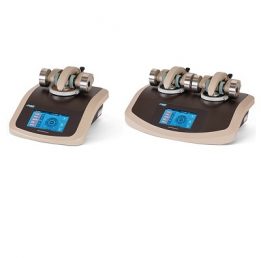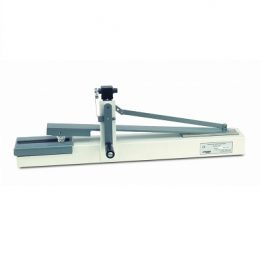A standardized crocking cloth is most often used as the abradant for textile applications. This square (or sometimes circular) cloth is wrapped around the acrylic crock “finger” and held in place with a wire spring clip. AATCC Method 8 specifies the cloth should meet the following specifications:
| Fiber | 100% 10.3 – 16.8mm combed cotton staple, desized, bleached, with no optical brightener or finishing material present |
| Yarn | 15 tex (40/1 cotton count), 5.09 turns/cm “z |
| Thread Count | 32 +/-3 warp ends/cm: 33 +/-3 picks filling/cm |
| Weave | 1/1 plain |
| pH | 7 +/-0.5 |
| Mass/sq. meter | 113 +/-5g greige: 100 +/-3 g finished) |
| Whiteness | W = 80 +/-2 |
Other abradants that might be used with the Crockmeter include felt, duck cloth, laboratory grade denim, coated abrasives (e.g. Polishing Paper, 281Q 3M WetorDry™), etc.
Evaluation
Typical evaluation for textile Crockmeter tests involve visually comparing the amount of color transfer / staining against a standardized color transfer scale. After rubbing the crocking cloth against a colored test specimen for the prescribed cycles, the crocking cloth is removed from the instrument and the amount of color transferred to it is compared to a known scale and assigned a grade. Two popular scales include AATCC Gray Scale for Staining or the Chromatic Transference Scale. For repeatable and reproducible test results, it is recommended that specimens be evaluated in controlled lighting and at a specified angle.
When using the standard 16mm diameter crock finger to test pile fabrics (such as textile floor coverings), there may be heavier staining on the circumference of the stained area of the crocking cloth. To resolve this, Test Method AATCC 165 describes using a “crock block” measuring 19.0 x 25.4mm.




